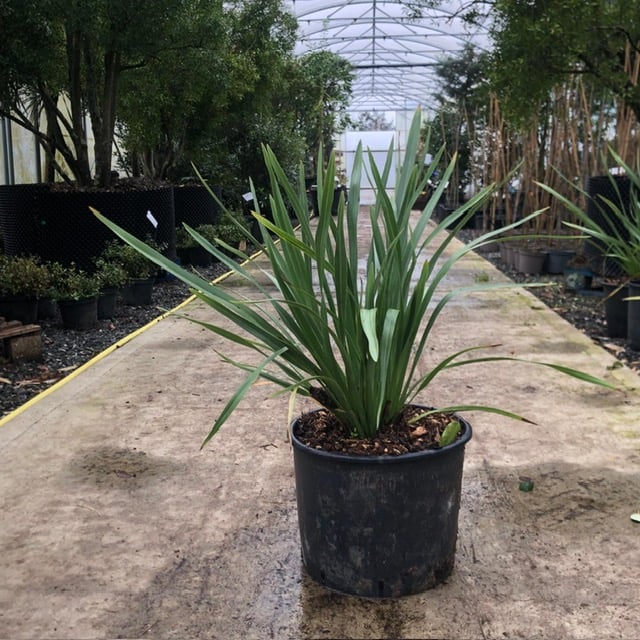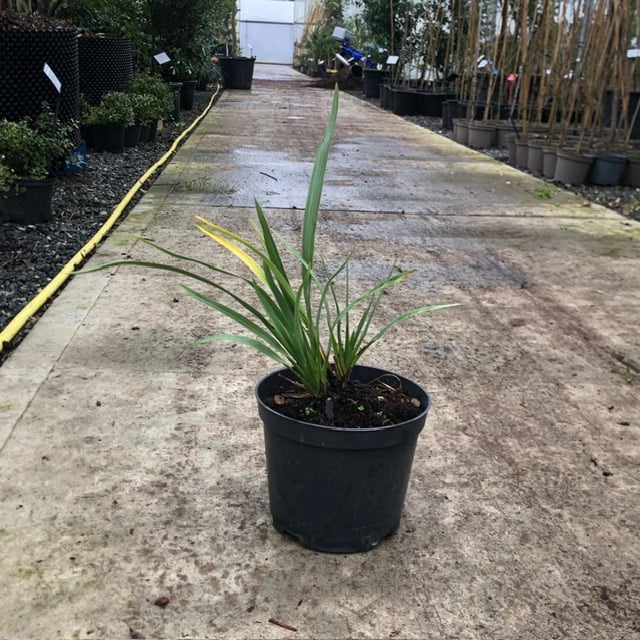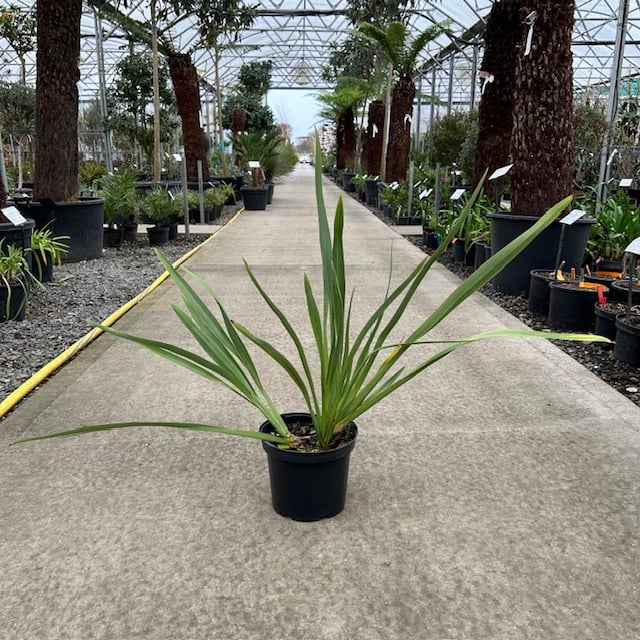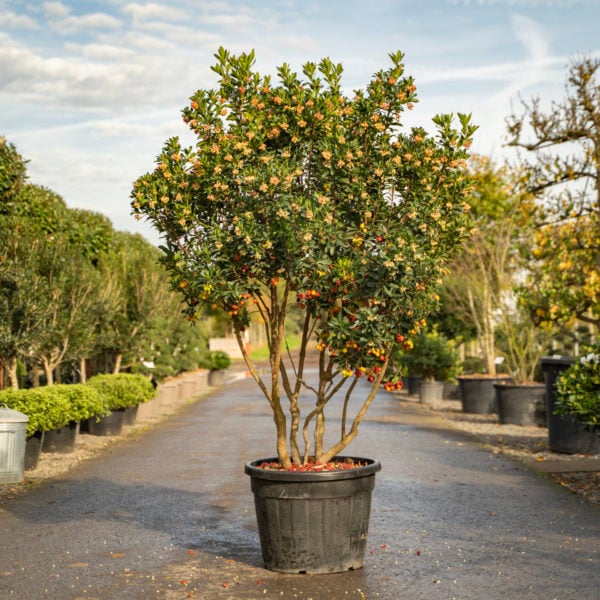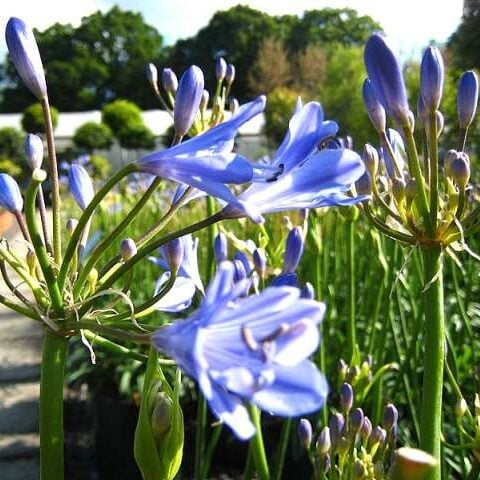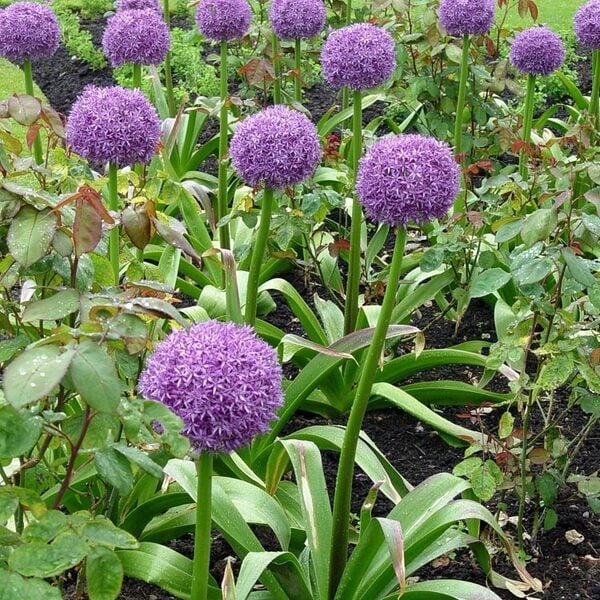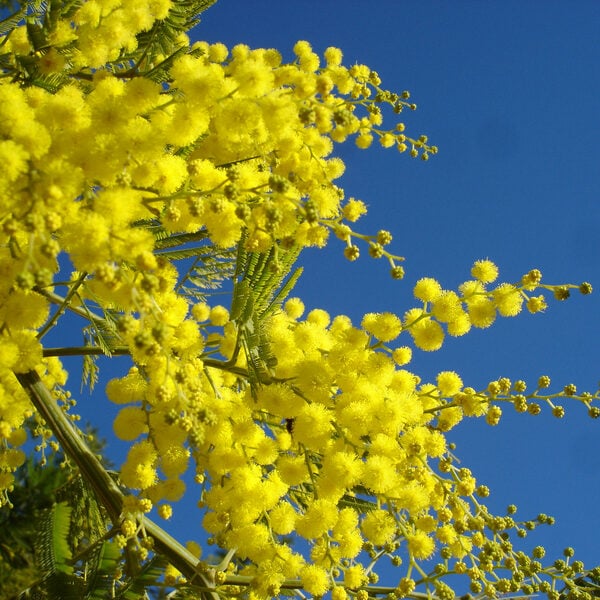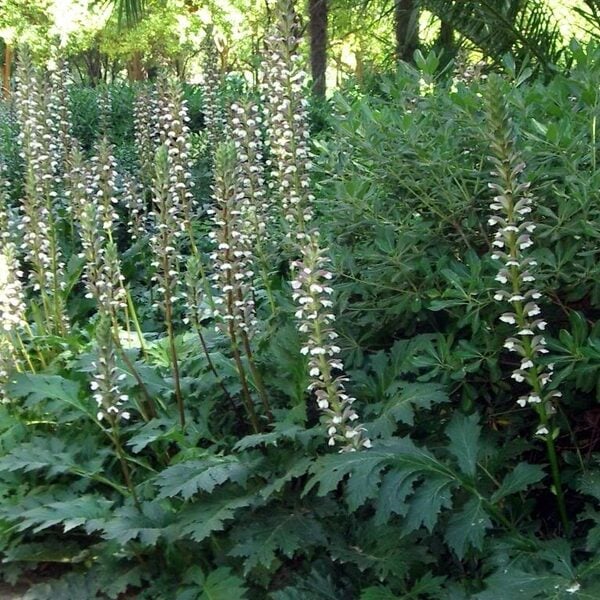Phormium cookianum (Mountain Flax)
From £28.50 incl. VAT
Greener, laxer and more luxuriant looking than the better known Phormium tenax. Lush and jungly. Yellow flowers on 5 ft spikes. to 5ft tall x 5ft wide.

Hardiness level Amber
Green, soft, floppy and luxuriant are the hallmarks of Mountain Flax - as opposed to glaucous, erect and spiky being the hallmarks of the better known New Zealand Flax (Phormium tenax). Also, they are smaller and although the flower spike is much the same, the flowers are yellow rather than deep red. Some might consider this to be more tasteful, more accommodating. Always nice to have a plant named after the great Captain Cook. This can grow to 5ft x 5ft after 3 or 4 years.
All Phormiums (whether P. tenax or P. cookianum) are described by proper botanists as having a 'broad genetic base'. This means highly variable and incredibly unpredictable. Sow 1000 seeds and hardly any will be the same; they will vary in the way they look and their frost hardiness. However, this particular plant seems to be the exception that proves the rule; they're all grown from seed from plants that have been growing in Cambridge Botanic Garden for many years and they're extraordinarily uniform and perfectly hardy. All other Phormiums we grow are clones. These are not. You'll sometimes hear the expression 'comes true from seed'. This is a good example - sow a bunch of seeds and the seedlings are uniform. In the case of Phormiums - incredibly unusual.
They don't like shade and they're very good in the wind so exposed spots are good. Creative Maintenance on these is time consuming but worthwhile. Remove old leaves and flower spikes with sharp secateurs or a sharp knife and look out for Mealy Bug as you go. They're an aphid that looks like a tiny white Wood Louse that loves living in the bases of all Phormiums. They produce copious quantities of white fluffy stuff which is always a dead giveaway. The plants will tolerate their presence but best to kill them if you can. Religious use of a bug gun should do the trick. Stick them with your marlin spike and they're red inside - blood? They're related to the Cochineal beetle (they're both considered Scale Insects) which is crushed to make the red food dye - cochineal. Yuck, you may well say.
Severe frost (-4°c or below) will give the leaves a glazed look and the leaves tend to roll up. It can look terminal but it's not. They recover wonderfully well as soon as the temperature rises.
Propagated by us from seed from Cambridge Botanic Garden.
Additional Information |
|
|---|---|
| Size | |
| Soil Type | |
| Light | |
| Plant Type | Big Leaves / Exotics, Evergreen, Flowers, Grown by Us, Herbaceous |
| Continent of Origin | |
| Specialist Plants | |
| Features | |
| Situation | Coastal, Exposed (To wind and sun), Mild City Gardens, Plants for Pots, Seaside, Sheltered Garden |
| Flower Colour | |
| Hardiness | |




